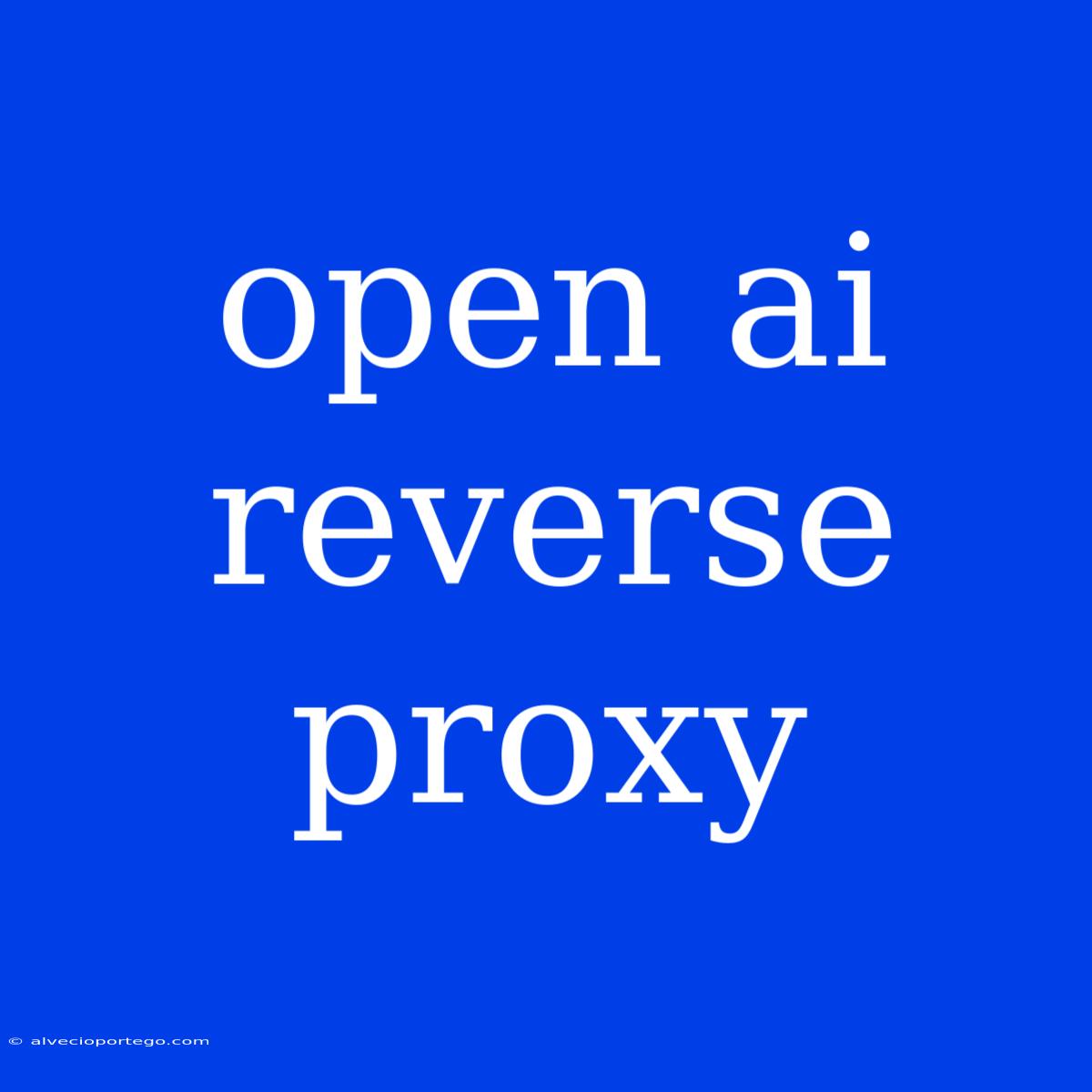OpenAI Reverse Proxy: A Guide to Enhanced Security and Scalability
OpenAI's powerful language models are transforming the way we interact with technology. However, as with any powerful tool, security and scalability considerations are crucial. This is where a reverse proxy comes in.
What is a Reverse Proxy?
In simple terms, a reverse proxy acts as a gatekeeper between your applications and the outside world. It receives requests from clients, processes them, and then forwards them to the appropriate backend server.
Why Use a Reverse Proxy for OpenAI?
Using a reverse proxy for OpenAI offers several key advantages:
1. Enhanced Security:
- SSL Termination: A reverse proxy can handle SSL encryption, offloading this task from your OpenAI server and improving performance.
- Protection Against Attacks: Reverse proxies can mitigate common web attacks like DDoS and SQL injection, safeguarding your OpenAI API.
- Authentication and Authorization: You can easily implement user authentication and authorization using a reverse proxy, controlling access to your OpenAI applications.
2. Improved Scalability:
- Load Balancing: Reverse proxies can distribute traffic across multiple OpenAI servers, ensuring your application remains responsive even during peak usage.
- Caching: By caching frequently accessed data, reverse proxies can reduce server load and improve response times.
3. Enhanced Monitoring and Logging:
- Reverse proxies provide valuable insights into application traffic, including request patterns, response times, and error rates.
Choosing a Reverse Proxy Solution:
There are several popular reverse proxy solutions available, each with its own strengths:
- NGINX: A highly performant and feature-rich solution, widely used for web serving and reverse proxying.
- Apache: Another popular web server with robust reverse proxy capabilities.
- HAProxy: Known for its high performance and excellent scalability, ideal for handling heavy traffic loads.
- Traefik: A modern reverse proxy with automatic service discovery and configuration capabilities.
Implementing OpenAI Reverse Proxy:
The specific implementation details will depend on your chosen reverse proxy solution and your overall architecture. Here's a general guide:
- Install and Configure Your Reverse Proxy: Follow the instructions provided by your chosen reverse proxy solution.
- Configure SSL Termination: Set up SSL encryption on your reverse proxy to secure communication between clients and your application.
- Configure Load Balancing: If using multiple OpenAI servers, configure the reverse proxy to distribute traffic evenly.
- Set Up Authentication and Authorization: Implement access control measures to restrict access to your OpenAI API.
- Configure Caching: Consider enabling caching for frequently accessed data to improve performance.
- Integrate Monitoring and Logging: Set up monitoring tools to track application health and traffic patterns.
Conclusion:
Using a reverse proxy for OpenAI is a smart decision for enhancing security, scalability, and overall performance. By carefully considering your needs and choosing the right solution, you can maximize the benefits of OpenAI's powerful technology while ensuring a secure and reliable experience for your users.

